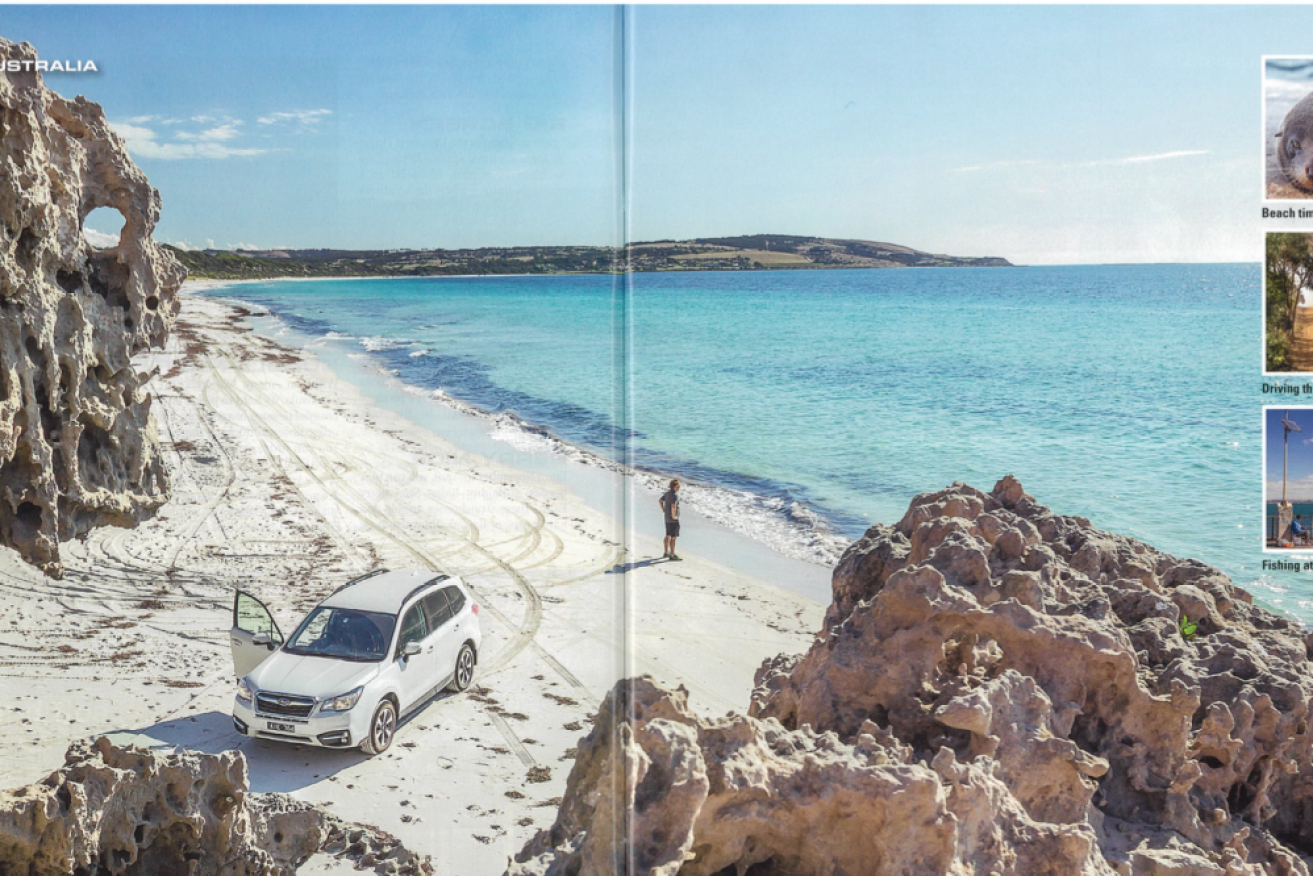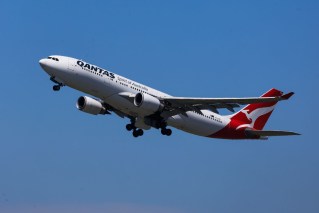Crushed by reader feedback, RACV apologises for beach drive


RoyalAuto ran a photo of a car parked on Emu Bay beach, and referenced driving along Snellings Beach on Kangaroo Island. Photo: RoyalAuto
A popular magazine has been forced to apologise for encouraging Australians to drive along pristine beaches, potentially killing crabs and native seabirds.
RACV’s RoyalAuto magazine ran a two-page spread in its July issue of a four-wheel drive parked on Emu Bay on South Australia’s Kangaroo Island.
The accompanying feature article described the 4WD “rolling confidently over the firmly packed sand” at Snellings Beach.
Some of the magazine’s 1.5 million readers complained the article sullied one of Australia’s most pristine destinations.
In a letter to the editor, a Victorian woman said no one should drive along the beach. The reader accused RoyalAuto of leaving “an intrusive footprint on the formerly pristine Snellings Beach”.
“Snellings is a small beach that can be walked in a few minutes,” she wrote.
“This allows you to experience how nature does perfection. A bonus is that pedestrians might see the rare hooded plover eggs and the birds get a chance of survival.

Ghost crabs are crushed and killed by cars that drive along the sand. Photo: AAP
“Beaches are for the creatures that depend on them. It is a privilege for humans to enjoy them.”
The editor apologised and pulled the photograph and references to driving along the beach from the online version of the article.
“Local by-laws state that you are only permitted to drive on a beach up to 250 metres from a constructed access road for the purpose of launching and/or retrieving a vessel. Once the vessel is launched, the vehicle should be parked off the beach,” the editor’s note said.
“It was RoyalAuto‘s intention to bring attention to a wonderful part of the world and apologises for appearing to encourage driving on this wonderful beach. Please do not drive on Snellings Beach.”
A spokesperson for RACV repeated the apology in a statement to The New Daily.
A Kangaroo Island Council spokesperson said it was indeed against local by-laws to drive on Snellings Beach, but that it was permitted to park on the sand at Emu Bay.
“It is fair to say, in the specific case of Snellings Beach, that council could not lawfully support general beach access [by car],” Andrew Boardman told The New Daily.
He said the option to drive on Emu Bay “provides an excelled opportunity for visitors and locals to enjoy driving to their own secluded or separate part of the beach and enjoy uncrowded tranquillity”.
Environmental destruction
Professor David M Kennedy, a coastal geomorphologist at the University of Melbourne, said this would “definitely” have environmental impacts.
Animals like ghost crabs and nesting birds would be crushed to death, he said.
“In Australia, it has been estimated that a single vehicle passage can crush 0.75 per cent of the intertidal population of ghost crabs and for 100 vehicle passes on a mid-Atlantic beach 14-98 per cent mortality was reported,” he said.
“Another example is the Coorong Peninsula where experiments found that on average 6 per cent of hooded plover nests were run over each day, equating to 81 per cent of nests being destroyed during a full incubation period.”

Cars are not permitted to drive on Snellings Beach, unless they are towing a boat within 250 metres of the entry. Photo: Kangaroo Island Council
Driving along the beach also interferes with nesting sites and feeding, Professor Kennedy said.
“Shore nesting birds, especially hooded plovers will often abandon nests and chicks.”
He said the worst impact on the habitat was on sand dunes. He said grass species which are needed for dune stability are crushed to death and unable to regenerate fast enough.
“Unfortunately the impact of vehicles on beaches is all negative – none of the habitats or animals can handle cars and trucks,” he said.
Dr Elizabeth Sinclair from the University of Western Australia said there were significantly lower animal populations on beaches where 4WD commonly drive, but said impacts varied.
A spokesperson for Subaru, which supplied the Forrester, said it received complaints from the public and relayed concerns to RACV.
“RACV maintained complete editorial control over the production of the article including where the vehicle was driven,” the spokesperson said.
“This said, we acknowledge the concern and wish to reassure that Subaru Australia takes protection of the environment together with compliance with laws very seriously.”

RACV apologised for the photograph and references to driving on the beach. Photo: RoyalAuto








